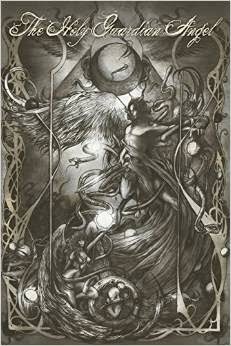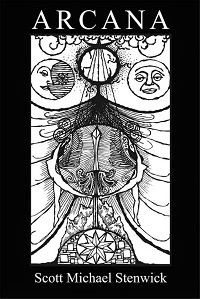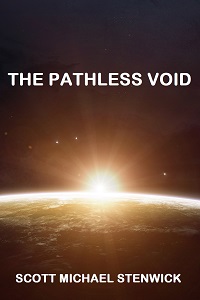Most of you at some point have probably seen a version of the Face-Vase Illusion, depicted above. It is a famous optical illusion that can be viewed either as two faces or as a vase, depending upon whether the dark or light field is taken to be the foreground. In addition to demonstrating how the human eye sees shapes, it can also be used as a valuable meditative training tool.
Ideally, in meditation you either want your mind focussed completely on a single idea or upon nothing at all. The former is usually referred to as insight-wisdom or concentrative meditation while the latter is referred to as calm abiding or formless meditation. Both techniques are very useful as part of a comprehensive spiritual practice. In either case, the goal of the meditator is to eliminate mental "chatter" that interferes with the goal of the meditation. The source of this mental chatter is referred to as the discursive mind in Buddhist teachings. As you become more accustomed to the chatter-free state of mind, your meditation will deepen and greater spiritual realization will emerge.
One of the key difficulties of this practice is recognizing when the discursive mind stops. You can't be sitting there on the cushion thinking over and over again "is my discursive mind stopped?" because, of course, if you're thinking such a thing it hasn't. The human mind is very good at learning to return to a given mental state once that state has been assimilated into consciousness, so it could be said that the greatest difficulty in meditation is recognizing what the mind feels like in its natural state, without any discursive chatter.
This is where the Face-Vase Illusion comes in. What the discursive mind spends its time doing is creating meaning. When you look at the illusion and see a face, your discursive mind is what is calling it a face. The same is true when you see a vase. Most people who look at the figure either settle on seeing one or the other, or switch back and forth between them creating a "flickering" effect. Try staring at the image for thirty seconds or so and you will see what I mean.
Here's how to do it. Print out a copy of the optical illusion and place it at sitting eye level. I use a Tibetan cushion and sit cross-legged when I meditate but you can just as easily do it sitting in a chair. Just make sure that the optical illusion is in the center of your visual field. Then slightly unfocus your eyes and look forward. You will see one image first, then the other - but keep looking until you no longer see the face or the vase but a continuous image of light and shadow. When the discursive mind stops, the labels of "face" and "vase" will disappear and the image will no longer "flicker." It will just look like a flat pattern. This is how you can recognize the proper meditative state.
Usually this will happen within twenty minutes or so of sitting. The more you do it, the faster your state of consciousness should be able to shift. Once you are able to do it pretty much at will, try it at various points throughout the day and try to realize that everything you are seeing is actually just a field of color, light, and darkness. Part of being able to work magick is gaining conscious control over the meaning-creating function of the mind, and the first step in doing that is to become aware of its activity.
Ideally, in meditation you either want your mind focussed completely on a single idea or upon nothing at all. The former is usually referred to as insight-wisdom or concentrative meditation while the latter is referred to as calm abiding or formless meditation. Both techniques are very useful as part of a comprehensive spiritual practice. In either case, the goal of the meditator is to eliminate mental "chatter" that interferes with the goal of the meditation. The source of this mental chatter is referred to as the discursive mind in Buddhist teachings. As you become more accustomed to the chatter-free state of mind, your meditation will deepen and greater spiritual realization will emerge.
One of the key difficulties of this practice is recognizing when the discursive mind stops. You can't be sitting there on the cushion thinking over and over again "is my discursive mind stopped?" because, of course, if you're thinking such a thing it hasn't. The human mind is very good at learning to return to a given mental state once that state has been assimilated into consciousness, so it could be said that the greatest difficulty in meditation is recognizing what the mind feels like in its natural state, without any discursive chatter.
This is where the Face-Vase Illusion comes in. What the discursive mind spends its time doing is creating meaning. When you look at the illusion and see a face, your discursive mind is what is calling it a face. The same is true when you see a vase. Most people who look at the figure either settle on seeing one or the other, or switch back and forth between them creating a "flickering" effect. Try staring at the image for thirty seconds or so and you will see what I mean.
At the risk of sounding like the kid with the spoon in The Matrix, the key to using the Face-Vase Illusion as a training tool for meditation is to realize that there is no face and there is no vase. The image actually consists of regions of dark and light, nothing more. This is alluded to in the words of the Heart Sutra one of the principal texts of Mahayana Buddhism.
No eye, ear, nose, tongue, body, mind.
No color, sound, smell, taste, touch, object of thought.
Here's how to do it. Print out a copy of the optical illusion and place it at sitting eye level. I use a Tibetan cushion and sit cross-legged when I meditate but you can just as easily do it sitting in a chair. Just make sure that the optical illusion is in the center of your visual field. Then slightly unfocus your eyes and look forward. You will see one image first, then the other - but keep looking until you no longer see the face or the vase but a continuous image of light and shadow. When the discursive mind stops, the labels of "face" and "vase" will disappear and the image will no longer "flicker." It will just look like a flat pattern. This is how you can recognize the proper meditative state.
Usually this will happen within twenty minutes or so of sitting. The more you do it, the faster your state of consciousness should be able to shift. Once you are able to do it pretty much at will, try it at various points throughout the day and try to realize that everything you are seeing is actually just a field of color, light, and darkness. Part of being able to work magick is gaining conscious control over the meaning-creating function of the mind, and the first step in doing that is to become aware of its activity.

























No comments:
Post a Comment